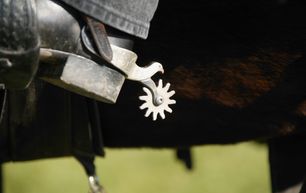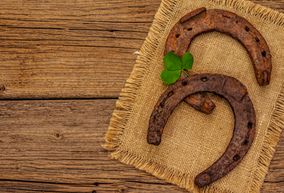.
Clydesdale.dk is an association that works targeted to spread the knowledge of the Clydesdale in Denmark. This includes being an outgoing active association, showing horses, as well as holding an annual "show" etc.
We wish that the Clydesdale will be a sought breed for use as both driving and riding horse, as it is extremely suitable for both purposes due to its very calm mind.
The association will follow Clydesdale Horse Society Scotland's designated breeding goals and directions at any time.
The Clydesdale horse has its origins in eighteenth century Lanarkshire, taking its name from the area once known as Clydesdale. Two men, the Sixth Duke of Hamilton and John Paterson of Lochlyloch, are credited with establishing the breed, bringing Flemish stallions into the area in an attempt to improve local native horses by cross-breeding. Success followed and these improved horses formed the backbone of the breed we know today as the Clydesdale.
These horses ultimately spread beyond Lanarkshire to become Scotland´s real “horsepower”, being used in both town and countryside situations. At its height it is estimated that the breed numbered in the region of 140,000 pure and cross-bred horses.
The Clydesdale was not only the pride of Scotland, however, he was exported over the border to England and found himself overseas in growing numbers too, in particular in Australia, New Zealand, North and South America and Canada.
By the 1950s, however, the Clydesdale had had his heyday. Increasing use of tractors and the internal combustion engine saw him superseded for farm work and for use in Scotland´s urban environment. Some say this revolution was speeded up, particularly in the countryside, by the arrival of grass sickness, a killer desease that still today causes the untimely death of horses in areas where it is prevalent.
By the mid- 1970s the Clydesdale´s numbers were so low it was recognised by the Rare Breeds Survival Trust as being "vulnerable" and categorised as such. Today numbers have stabilised, although the breed is still recognised as being rare.
The Clydesdale horse makes a huge impression on those who appreciate and work with him. His huge size; he stand at around 17hh, makes him unmissible, his striking good looks turn heads wherever he hoes and his ability to adapt to his place in the twenty-first century endear him to horse-lovers worldwide.
He is a true gentle giant; gentle enough for the youngest child to be introduced to, yet strong enough to pull a heavily laden dray. He is also adaptable and capable of being ridden in competition or for pleasure. He can on occasion jump, although it may not be very high, and he has also been used for logging duties where mechanical means are not suitable. He is most of all though a lovely horse, and from huble Scottish farm horse the Clydesdale has come far.
Source: “For love of the Clydesdale Horse”, By Heidi M Sands.





